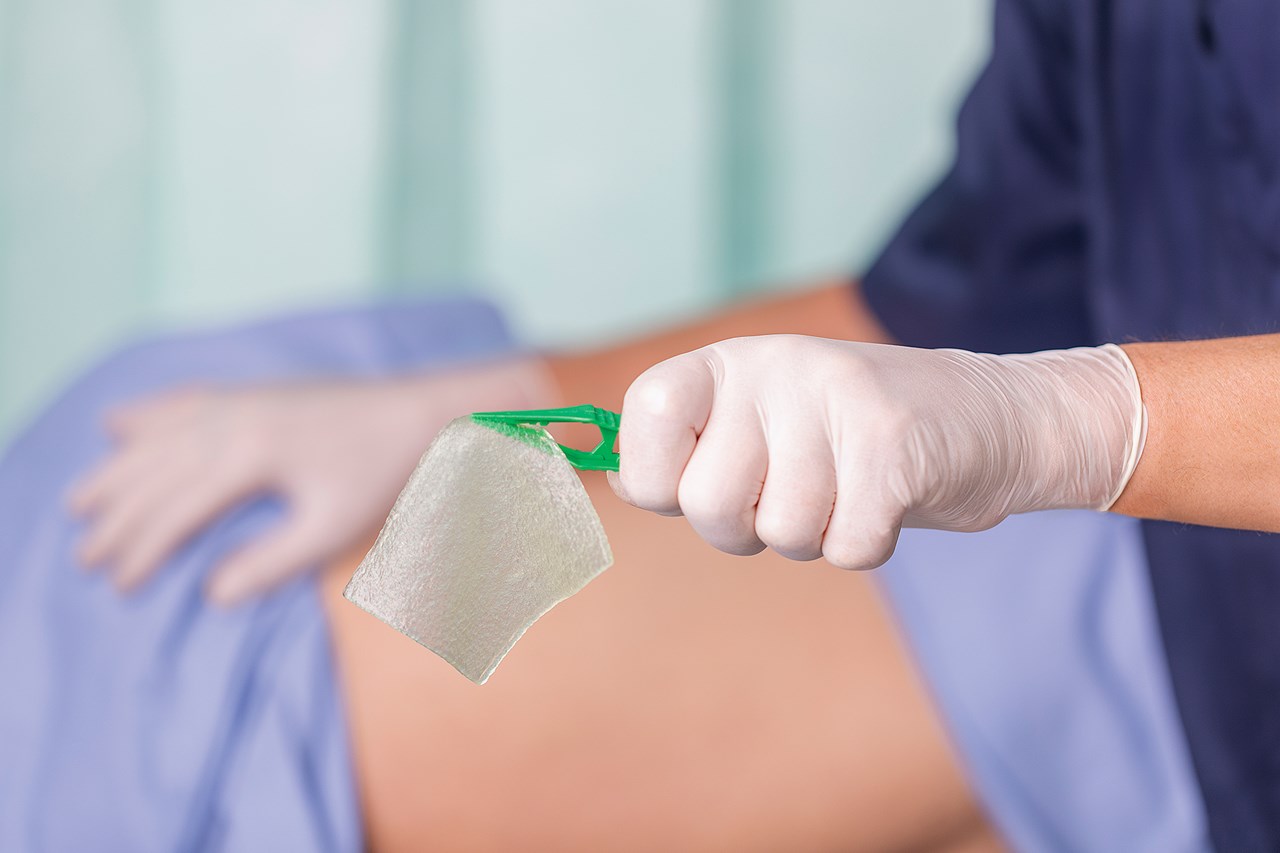Exufiber in a new study
In comparison to a competitive gelling fibre dressing, Exufiber® dressings were shown to have a greater percentage trend for wound reduction in chronic, exuding leg ulcers in a 248 patient randomised controlled trial.

A randomised, open-label, parallel-group, multicentre, comparative study to compare the efficacy and safety of Exufiber® with Aquacel® Extra™ dressings in exuding venous and mixed aetiology leg ulcers.
Joergensen B, Blaise S, Svensson A-S. International Wound Journal 2022;19(S1):22‐38.
The aim of this study was to compare Exufiber® with a competitive gelling fibre dressing in terms of their ability to reduce wound area in moderate or highly exuding leg ulcers, over a period of six weeks. A subgroup of subjects were followed for up to 24 weeks.
- A randomised, open-label, parallel-group, multicentre, non-inferiority study
- Included both inpatients and outpatients presenting with an exuding leg ulcer
Primary study objective and methodology:
- To compare the efficacy and safety of two dressings in the management of chronic, moderately or highly exuding venous or mixed aetiology leg ulcers of predominantly venous origin.
- Patients with leg ulcers that were moderately or highly exuding justifying the use of an absorbent dressing and whose ankle- brachial-pressure index (ABPI) by Doppler was less than or equal to 7 to <1.3.
- The ulcer had to have been present for between 6 weeks and 60 months, with a surface area between 3cm2 and 100cm2 and located at least 3cm away from any other
- All patients were treated with a recognised compression system and relevant concomitant medications, including antibiotics and analgesics at the discretion of the investigator.
- Wound dressings were applied at baseline (Week 0) and changed at each study However, dressings could also be changed between visits, if necessary (e.g., if they were saturated), following normal practice and intended dressing use.
- Patients were randomised to either Exufiber® or to a competitive gelling fibre dressing, balancing factors such as wound duration, wound area and compression at inclusion.
- Patients were assessed at baseline (Week 0) and at Weeks 1, 2, 3, 4, and 6 (or until wound healing, if earlier).
- At each assessment visit the following variables were assessed based on the condition and performance of:
- the wound dressing
- wound status
- condition of the peri wound skin
- signs of local infection
- wound pain
- patient comfort
Secondary study objective and methodology:
- To compare wound status and progress as well as investigator- and patient-evaluated outcomes, such as ease of use, comfort, pain, ease of removal and tolerability.
- The patients who were followed for up to 24 weeks also attended the clinic at Weeks 8, 12, 16, 20, and 24 after the initial dressing placement (or until wound healing, if earlier).
- Patients’ opinion of the dressing was sought in relation to:
- the level of anxiety they experienced during a dressing change
- ease of movement and comfort while wearing the dressing
- stinging or burning during wear
- ability of the dressing to remain in place during wear






